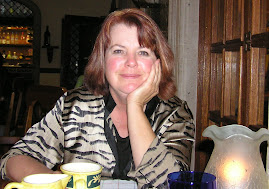Deep Blue Home
By Julia Whitty
246 pages, Houghton Mifflin Harcourt, 2010
Reviewed by
Christine Heinrichs
In her new book, Deep Blue Home: An Intimate Ecology of Our Wild Ocean
Whitty, an environmental correspondent for Mother Jones, is first a documentary filmmaker, with more than 70 nature documentaries to her credit. Her stories and articles have been recognized with many awards, including the O. Henry Award. In Deep Blue Home she shows off this storytelling prowess. The book begins on Isla Rasa in the Gulf of California in 1980, where Whitty spent a field season, April through June. She was there as an assistant to another graduate student, Monica, studying royal terns, along with researcher Enriqueta Velarde, then a graduate student completing her dissertation on the breeding colony of Heerman’s gulls.
Young, unattached, intellectually voracious, and personally adventurous, Whitty is open to the wealth of biodiversity and human experience the island offers. Originally brought to the island for bird research, she packed her snorkel, too, and so spends time under the sea as well. Her filmmaker’s eye catches everything from the tiniest plankton to fish, sea turtles, and marine mammals.
Whitty chronicles not only the wildlife on and around the island, but also Isla Rasa’s human drama. Among the three women, the irritations of daily island life rub raw, culminating in an explosive argument over whether to confine the breeding colony and band the chicks. Confining them makes them easier to study, but vulnerable to being picked off by predatory gulls, ravens, and falcons.
After introducing her passion for nature and open water, Whitty takes her readers to the far reaches of the ocean, following currents that run across ocean boundaries. Such divisions are convenient for humans, but meaningless to the birds, fish, reptiles, invertebrates, and mammals that migrate across them. “The three-dimensional realm of the ocean is layered with watersheds running over and atop one another in multiple directions,” she writes.
Whitty travels the globe, from the frigid waters of Newfoundland, watching icebergs float south to melt, in 1984, to the Galapagos, where she films whales in 1987, then to the Hydrate Ridge, 50 miles off Oregon’s coast, to look for extremophiles, in 2006. These organisms of the chemical soup known as a “cold seep” are too far from sunlight to rely on photosynthesis; they live instead by chemosynthesis in a frigid environment of methane and hydrogen sulfide.
The depiction of this underwater life is fascinating – inhabited as it is by both mammals with familiar characteristics and otherworldly organisms, such as moon jellies – and Whitty makes it all the more so by explaining the science of this hidden world. As she immerses the reader in this world of water, Whitty details the biological basics, and historical and literary backgrounds of the species she observes.
To help readers understand each species’ risk of extinction, she includes the International Union for the Conservation of Nature and Natural Resources’ listing for each species.
That knowledge is particularly painful when it comes to whales. The destruction and cruelty that have reduced what may have been as many as 10 million whales to the present estimate of 500,000 is difficult to comprehend. Such a loss reverberates through the ecosystem, with far-reaching effects.
Whitty draws freely on historical and mythological sources to portray the power of the oceans in human culture. She finds inspiration in Hindu literature’s Mahabharata, India’s Rig Veda, the Greek pantheon, Norse mythology, and the cave art of Baja California.
“Working the ocean still requires a delicate finesse between audacity and deference,” she writes.










No comments:
Post a Comment